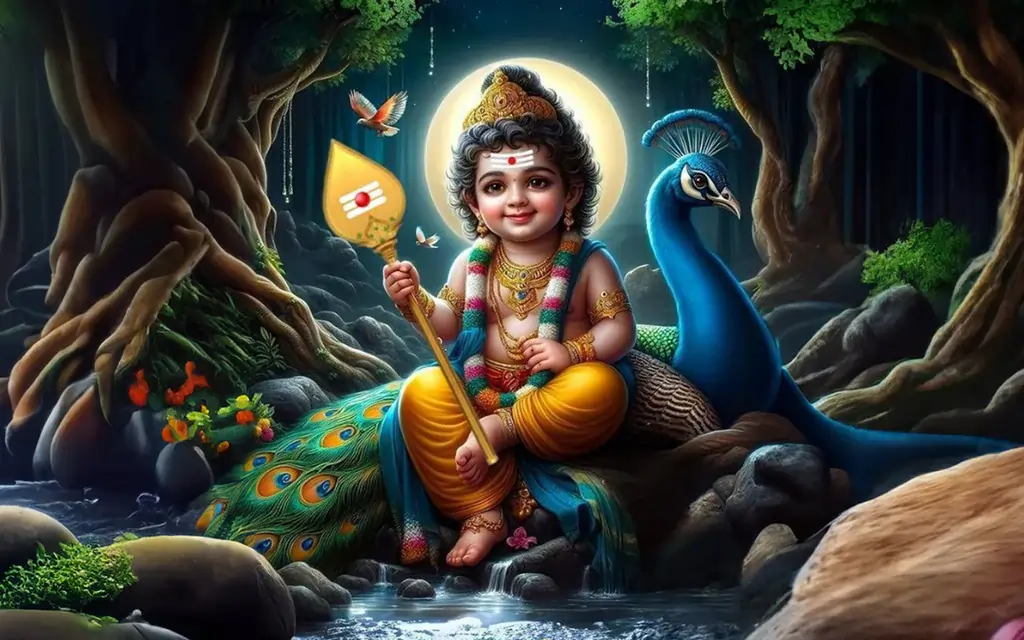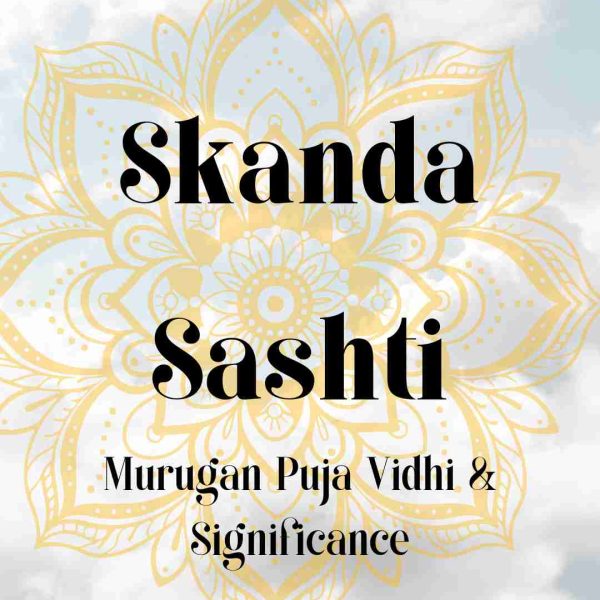
Introduction
Skanda Shashti is one of the most important festivals dedicated to Lord Murugan, also known as Skanda, Subramanya, Kartikeya, and Kumara. He is the son of Lord Shiva and Goddess Parvati, and is worshipped as the God of war, wisdom, courage, and victory.
This festival is celebrated with great devotion in Tamil Nadu, Sri Lanka, parts of Kerala, and among Murugan devotees worldwide. It commemorates the victory of Lord Murugan over the demon Surapadman, symbolizing the eternal truth that good always triumphs over evil.
Skanda Shashti is also considered a time for spiritual purification. Many devotees take vows, fast, chant special hymns, and participate in grand temple rituals. The most famous celebrations happen at the Tiruchendur Murugan Temple in Tamil Nadu.
Dates for Skanda Shashti in 2026
In 2026, Skanda Shashti will be observed during the Shukla Paksha (bright fortnight) of the lunar month of Kartik.
According to Panchang, the main celebration day, known as Soorasamharam, is expected on Thursday, July 30, 2026.
The Story Behind Skanda Shashti
According to Hindu mythology, the demon brothers Surapadman, Tarakasura, and Simhamukha created chaos in the world. They had gained immense power through boons and began troubling gods and humans alike.
The devas (gods) prayed to Lord Shiva for help. From the divine sparks of Lord Shiva’s third eye, Lord Murugan was born, holding a spear (Vel) given by Goddess Parvati. Murugan led the divine army and, after six days of fierce battle, defeated Surapadman on the final day, which is celebrated as Soorasamharam.
The next day marks Theerthavari or Thirukalyanam, symbolizing peace and divine union after victory.
The Six-Day Ritual Sequence
The festival lasts six days, each with its significance:
- Day 1 – Kappu Kattu (Vow Taking)
Devotees tie a sacred thread on their wrist or arm, promising to observe purity, discipline, and devotion for the next six days. - Days 2–5 – Daily Pujas and Alankarams
Each day, Murugan’s idol is decorated in a different form, such as Bala Murugan (child form), Valli Murugan (with Goddess Valli), or Raja Alankaram (royal decoration). - Day 6 – Soorasamharam
The climax of the festival where the dramatic battle between Murugan and Surapadman is enacted in temples, especially at Tiruchendur. - Day 7 – Theerthavari / Thirukalyanam (optional in some places)
The idol is taken for a holy dip in the sea, river, or temple tank. In some temples, a symbolic divine wedding of Murugan with Goddess Deivayanai is performed.
Murugan Puja Vidhi at Home
If you cannot attend temple celebrations, you can still worship Lord Murugan at home:
- Preparation – Clean your home and the puja area. Take a bath early in the morning and wear fresh, simple clothes (preferably white or saffron).
- Setup – Place an idol or framed picture of Lord Murugan on a clean altar. Decorate with flowers like jasmine, lotus, or arali.
- Lighting the Lamp – Light an oil lamp and incense sticks to begin the worship.
- Abhishekam (Ritual Bath) – Offer water, milk, honey, ghee, and rose water to the idol while chanting “Om Saravanabhavaya Namah”.
- Naivedyam (Food Offering) – Offer fruits, coconut, or milk-based sweets.
- Chanting – Recite the Skanda Shashti Kavacham, Kanda Sashti Kavasam, or simple Murugan mantras.
- Aarti – End with aarti and prayer for protection and blessings.
The Kavadi Ritual
The Kavadi is one of the most important aspects of Skanda Shashti for many devotees, especially in Tamil Nadu and Sri Lanka.
- Meaning – Kavadi means “burden” in Tamil. It symbolizes the devotee’s burden being offered to Murugan, who grants relief and blessings.
- Types of Kavadi:
- Paalkavadi – Pots of milk carried to the temple and poured over the idol during abhishekam.
- Pushpa Kavadi – A decorated frame filled with flowers.
- Alagu Kavadi – Involves body piercing as a form of extreme penance (for experienced devotees).
- Paalkavadi – Pots of milk carried to the temple and poured over the idol during abhishekam.
During the Kavadi procession, devotees walk barefoot, often chanting Murugan’s names and hymns.
Want to know more about Festival & Vrata
Fasting Rules During Skanda Shashti
Fasting is an important part of this festival. Devotees choose according to their capacity:
- Nirjala Vrat – Complete fast without food or water (for experienced devotees).
- Phalahar Vrat – Only fruits, milk, and water.
- Ek Bhojan Vrat – One simple vegetarian meal per day.
Avoid:
- Non-vegetarian food
- Alcohol or tobacco
- Onion, garlic, and heavily spiced foods
- Gossip, anger, or negative speech
Important Murugan Mantras
- Basic Mantra – “Om Saravanabhavaya Namah”
- Vel Mantra – “Om Velayuthaya Namah”
- Skanda Shashti Kavacham – A protective hymn composed by Devaraya Swamigal.
Chanting these with devotion is believed to remove obstacles, bring success, and protect from negativity.
Benefits of Observing Skanda Shashti
| Spiritual Benefit | Everyday Benefit |
| Removes past karmic effects | Brings peace of mind |
| Gives courage and strength | Helps face personal challenges |
| Improves focus and clarity | Aids in studies and work |
| Promotes family harmony | Reduces conflicts at home |
| Protection for children | Keeps them safe and healthy |
Do’s & Don’ts
Do’s:
- Begin the day with a bath before sunrise.
- Keep your body and surroundings clean.
- Maintain a peaceful and positive mindset.
- Help others, donate food or clothes.
Don’ts:
- Avoid negative actions, anger, and arguments.
- Do not break your fast without a genuine reason.
- Never disrespect the Kavadi, temple, or sacred items.
FAQ
Q: Can women observe Skanda Shashti?
Yes, women can fully participate in fasting and puja.
Q: Is it necessary to carry a Kavadi?
No, it’s optional. Devotion matters more than the ritual form.
Q: What if I can’t go to a Murugan temple?
You can do puja at home or join online puja services.
Online Puja Platforms
If you cannot attend in person, you can join online Murugan pujas through trusted platforms:
- ePuja – Offers Murugan temple pujas with prasadam delivery.
- Srimander – Live video puja with personalized rituals.
- Astrotalk– Connects you to priests in major Murugan temples.
Conclusion
Skanda Shashti is more than a festival—it’s a spiritual journey of self-purification, discipline, and devotion to Lord Murugan. In 2026, with July 30 as the main celebration day, devotees can prepare by learning the rituals, choosing a fasting method, and keeping a pure heart.
Whether you join grand temple processions, carry a Kavadi, fast strictly, or simply light a lamp at home, Murugan’s blessings will reach you when your devotion is sincere. This is a time to let go of burdens, invite divine protection, and walk forward with courage and clarity.
